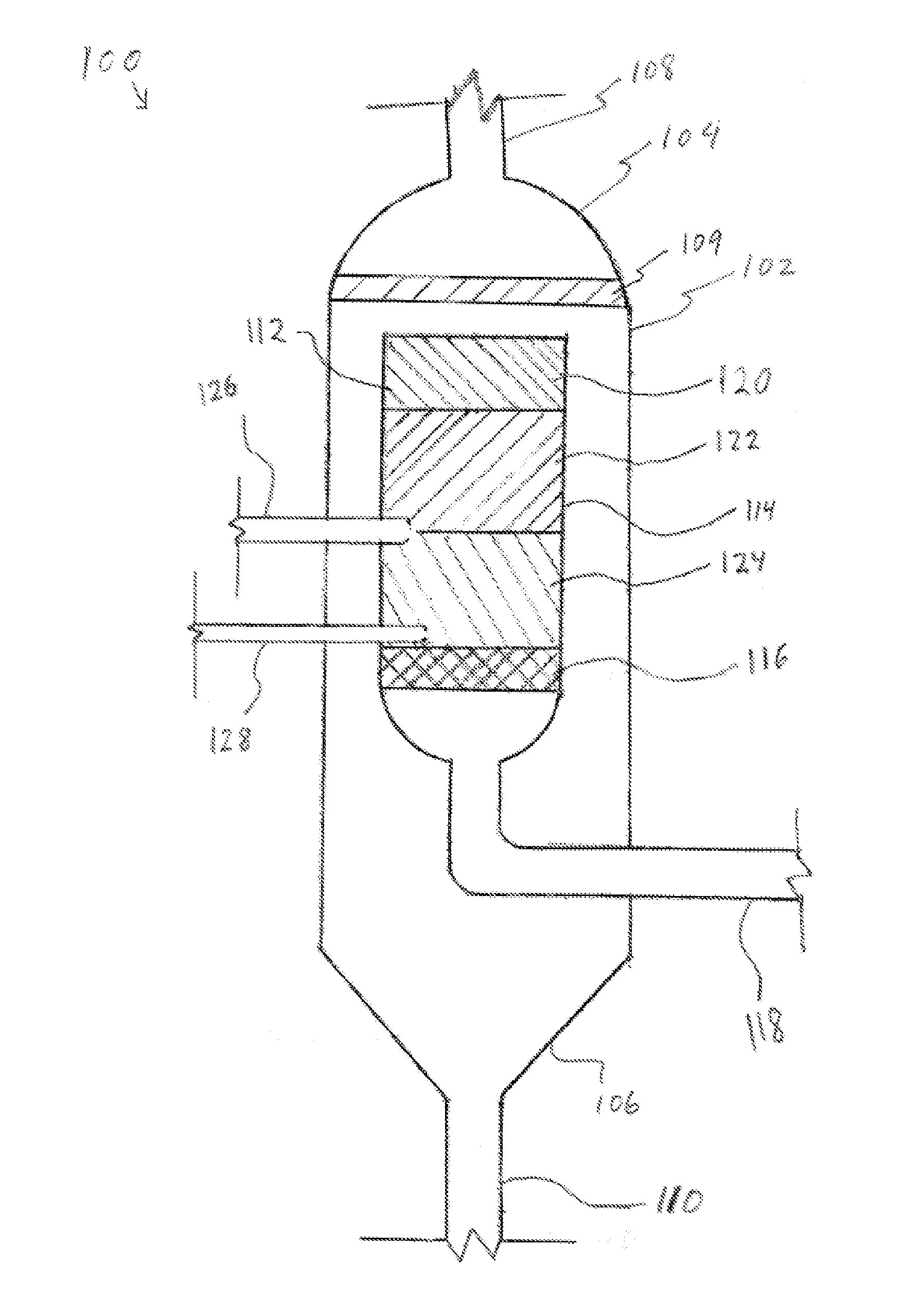Reactors, systems, and methods for forming solid products
a technology of solid products and reactors, applied in the direction of carbonsing rags, chemical/physical/physico-chemical processes, carbonsing rags, etc., can solve the problems of unsuitable removal, difficult economic separation of small solid materials from tail gases, and high capital and operating expenses of equipment to separate solid products from tail gases
- Summary
- Abstract
- Description
- Claims
- Application Information
AI Technical Summary
Benefits of technology
Problems solved by technology
Method used
Image
Examples
Embodiment Construction
[0023]The present disclosure describes a reactor, system, and method for the production of solid products from reactive gases. Such solid products are formed from the reactive gases in contact with a catalyst material. In operation, the reactive gas flows across the bed of catalyst material in such a way that solid products form on the leading edge of the bed (i.e., the exposed surface). The volumetric expansion of solid products (i.e., due to the formation of such solid products) causes the solid products to flow out of the reactor. Downstream portions of the bed of catalyst material may optionally be configured to filter or react with components of the reactive gases to minimize the entrainment of solid product in the tail gases leaving the reactor.
[0024]As use herein, the term “solid product” means and includes any dusty, friable, powdery, sandy, chunky, or porous material that may occur as solid granules or agglomerations of solid material with or without voids. Such materials m...
PUM
| Property | Measurement | Unit |
|---|---|---|
| temperatures | aaaaa | aaaaa |
| pressure | aaaaa | aaaaa |
| pressure | aaaaa | aaaaa |
Abstract
Description
Claims
Application Information
 Login to View More
Login to View More - R&D
- Intellectual Property
- Life Sciences
- Materials
- Tech Scout
- Unparalleled Data Quality
- Higher Quality Content
- 60% Fewer Hallucinations
Browse by: Latest US Patents, China's latest patents, Technical Efficacy Thesaurus, Application Domain, Technology Topic, Popular Technical Reports.
© 2025 PatSnap. All rights reserved.Legal|Privacy policy|Modern Slavery Act Transparency Statement|Sitemap|About US| Contact US: help@patsnap.com



